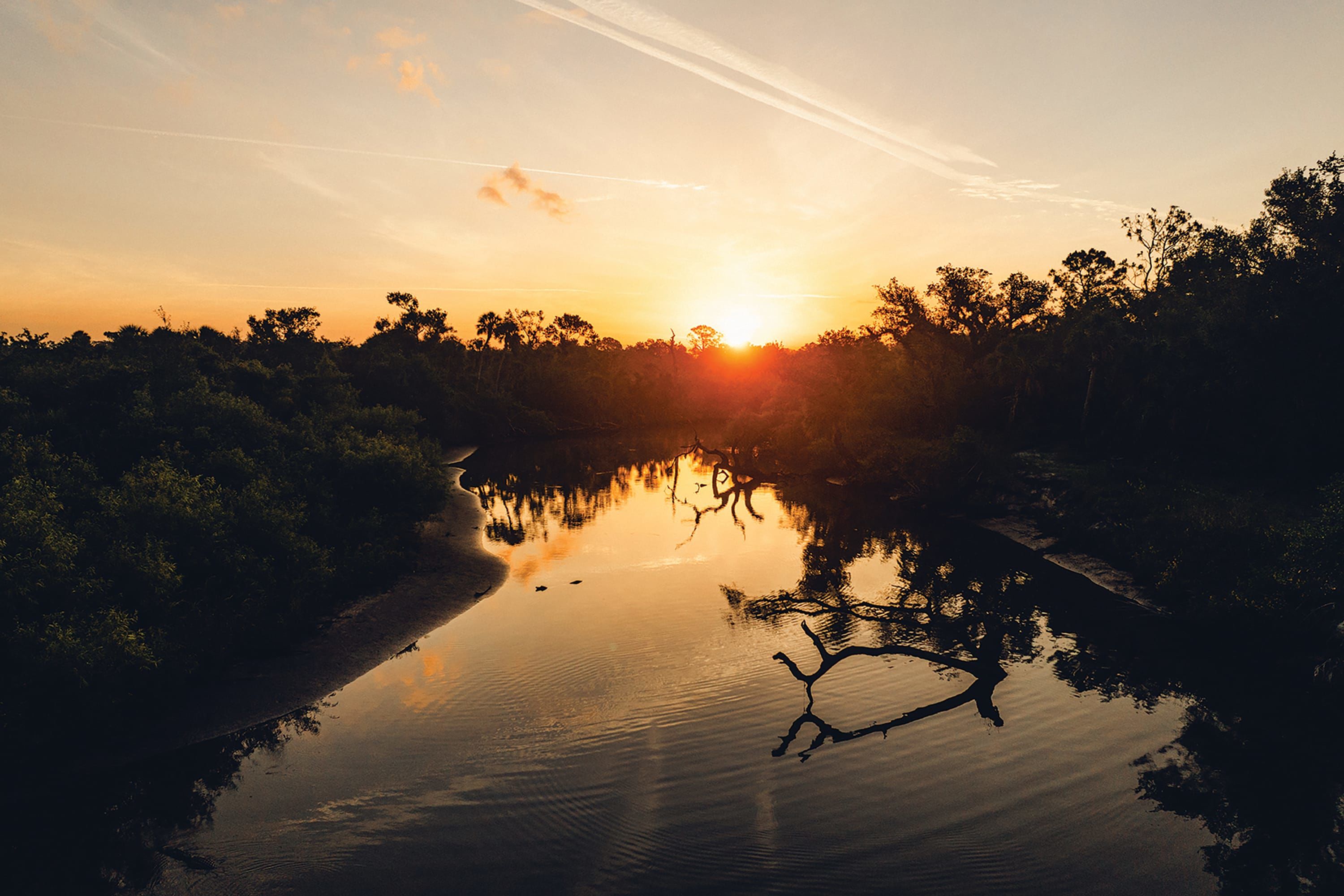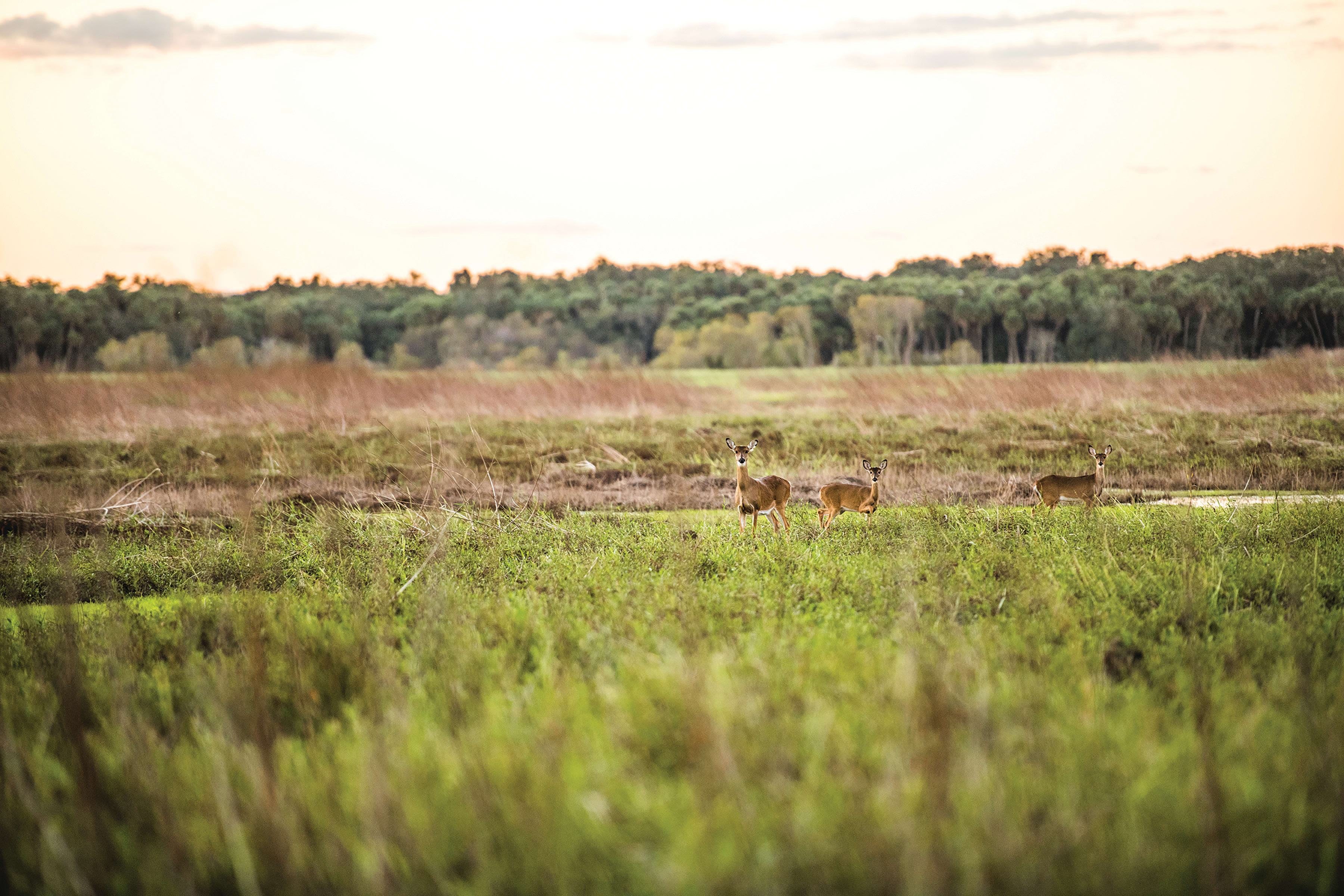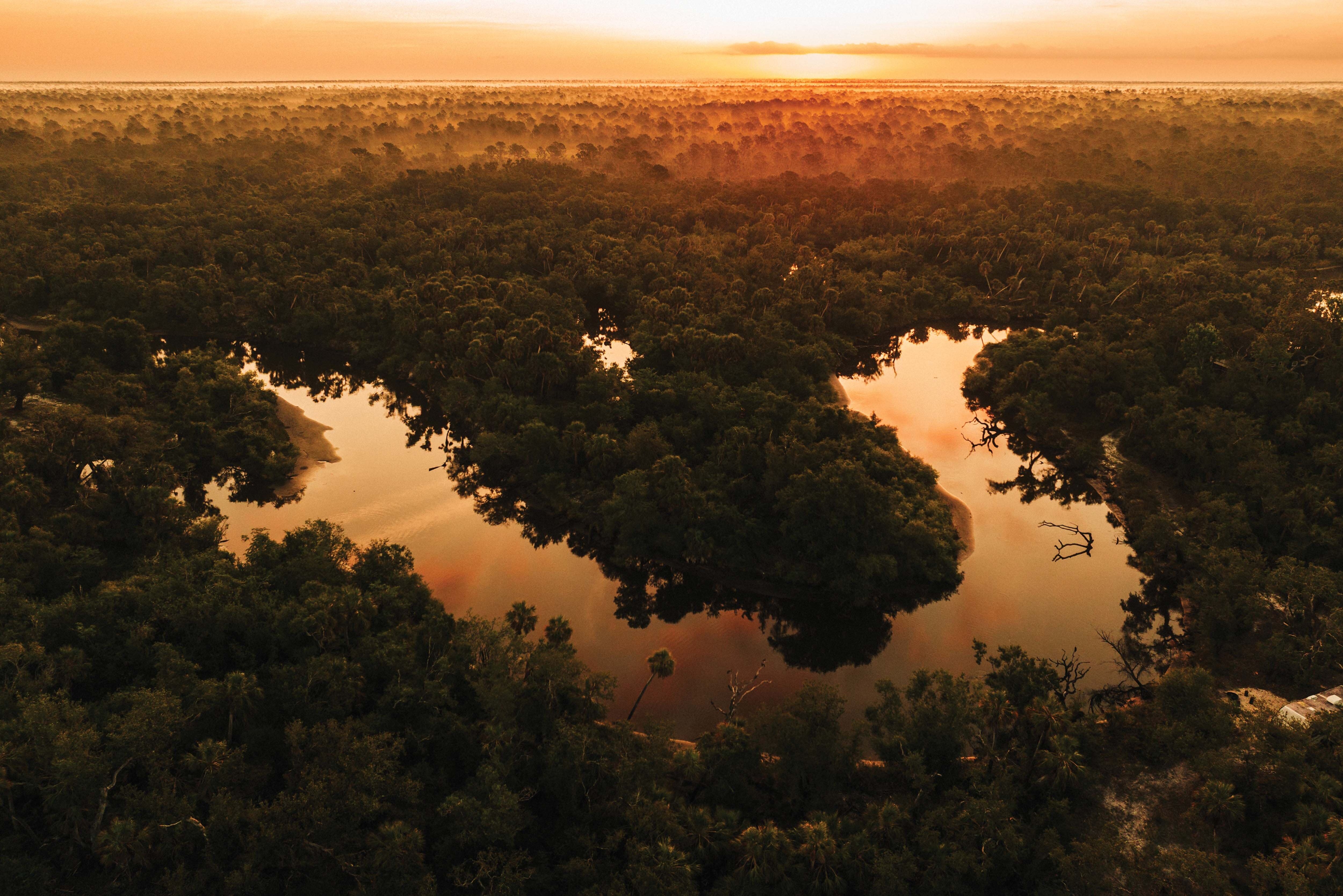Where and How to Camp at Myakka River State Park
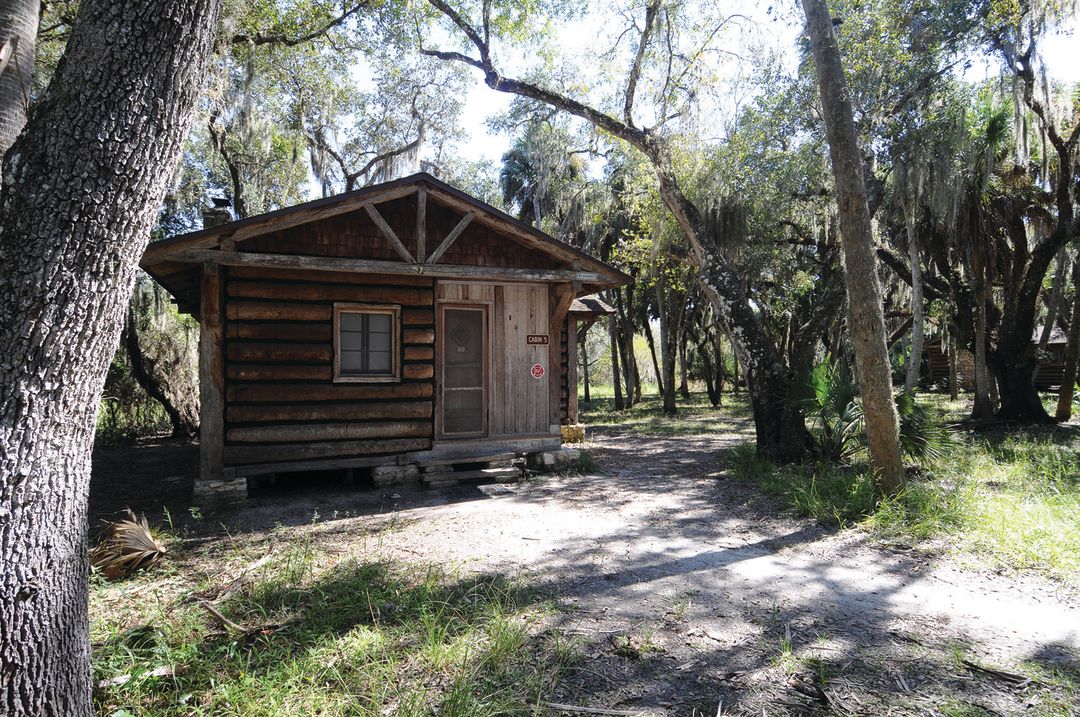
Five cozy cabins welcome visitors.
Image: Everett Dennison
Bee Island doesn’t look like an island. There’s no water in sight. But back when Myakka River State Park was just one massive grassy cattle pasture, this stretch of elevated ground was home to the only trees in sight, a grove of longleaf pines. The “island” of trees got its name from the swarms of bees that once lived there, producing palmetto honey that sweetened the lives of settlers.
Trees have become more numerous across the prairie (rangers, in fact, now want to do away with many of them) and the bees have dispersed, but people continue to show up. Except now they’re in search of peace and quiet, not honey.
Bee Island is one of six primitive campsites in Myakka River State Park, spots where you’ll find a fire ring, space for a tent and little else. It’s a 5.4-mile hike to Bee Island (or you can use the Ranch House Road shortcut). Walks to other primitive campsites are as short as 2.2 miles or as long as 14.1 miles. Wherever you camp, you must bring everything with you. There’s no drinkable water, no bathrooms, no pre-cut firewood. It’s just you, a ceiling of stars and whatever creatures happen to be passing by.
The trek can be arduous. My wife and I planned a trip one November, thinking the weather would be cool. Instead, the sun scorched our foreheads as we force-marched our way out to Bee Island. We lit a fire, but sat yards away from it, and we drank every drop of our water long before we made it back to the car.
Other trips were better. For a few years, we went with friends to Bee Island every New Year’s Eve. We pushed wheelbarrows full of cheap champagne and dry ice and humped less vital supplies on our backs. We toasted the coming year, played skunk ape and practiced our primal screams. In the morning, we’d stroll through the mist that hovered above the fields of saw palmettos that surround Bee Island, eat enormous breakfasts and drink bittersweet coffee.
The best part: Aside from a few stray hikers, we’d see no one. We’d hear no traffic, spot no planes. Just a few miles away from the park’s main road, we saw this land as early pioneers did—beautiful and serene but also a place where man was prey to heat, thirst and other natural dangers.
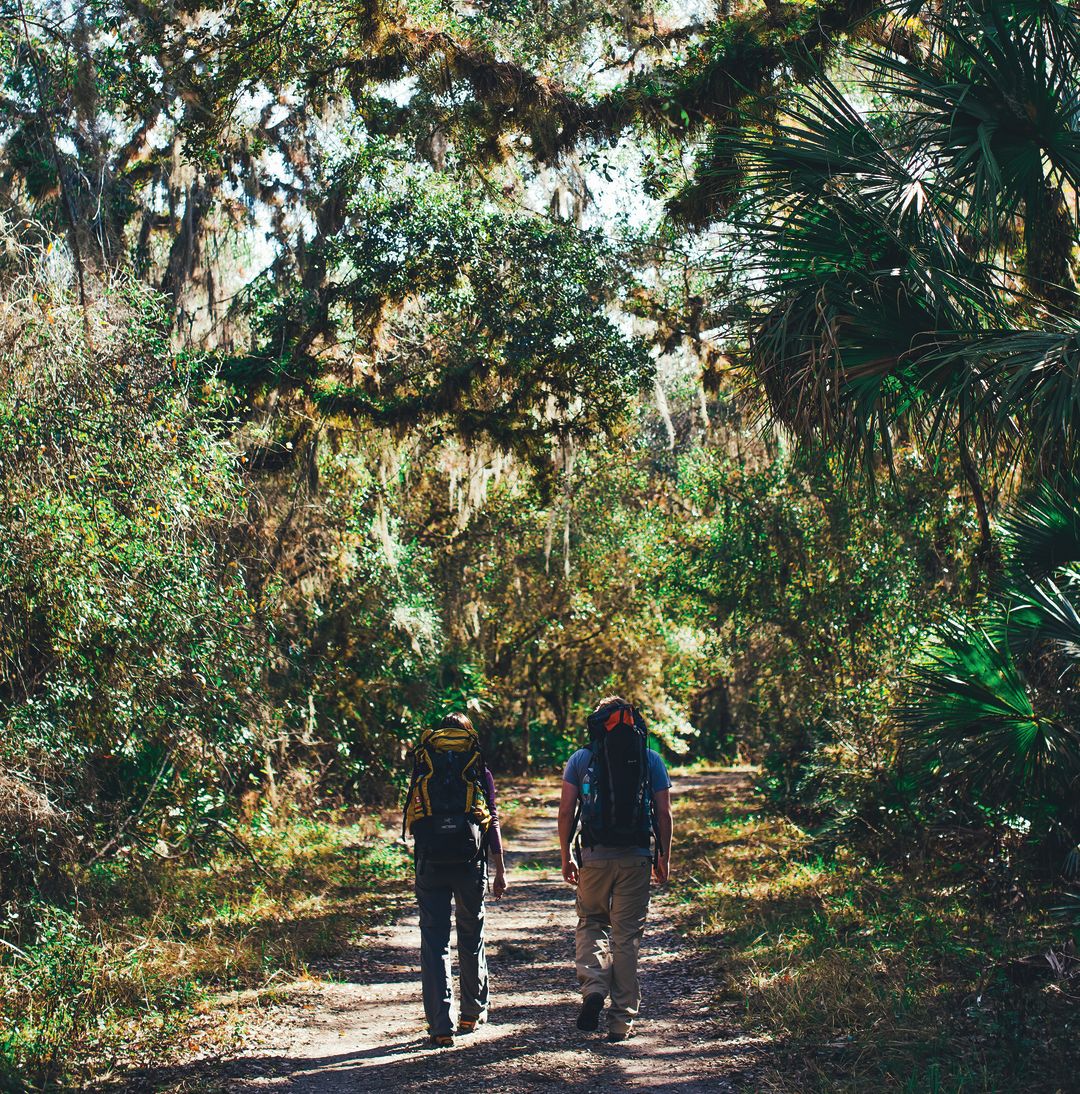
Campers head down a trail
Image: Everett Dennison
Too much of an AC junkie to go camping? Book a spot in one of the park’s five log cabins. Built in the 1930s by Civilian Conservation Corps workers employed through New Deal legislation, the cabins can each accommodate up to six people and have fireplaces, kitchens and bathrooms—and, of course, air-conditioning.
The cabins are filled with the scent of fresh wood and have high A-frame ceilings and walls of thick tree trunks. The park just finished renovating them, making one more accessible to those with disabilities and raising all of them a few feet to make them more flood-resistant. Upgrades also included new appliances and new wood floors. If you want an intimate getaway, cabin three is the most secluded. If you’re planning a bigger gathering, book cabins four and five, which are within sight of each other. But whatever you do, book far ahead—the cabins are extremely popular. And they may be the most reasonable lodging in town—$70 a night includes you and all your guests.
And don’t forget the marshmallows. Each cabin has a wide back porch, with steps down to a grill and fire pit area that’s perfect for nighttime powwows. Listen to the fire crackle, gaze at the moon, gulp down nuggets of hot, sticky sugar and then, right before bed, crank up the AC.
